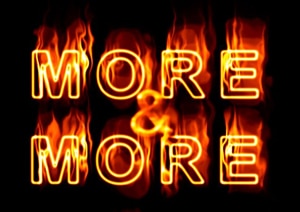
May 4, 2020
Still More On COVID-19
By Michael D. Shaw
1. Don’t believe the death numbers.
From the get-go, the CDC’s “Guidance for Certifying Deaths Due to Coronavirus Disease 2019 (COVID–19)” seemed a bit off. Certainly, this oft-cited paragraph raised a few eyebrows…
“In cases where a definite diagnosis of COVID–19 cannot be made, but it is suspected or likely (e.g., the circumstances are compelling within a reasonable degree of certainty), it is acceptable to report COVID–19 on a death certificate as “probable” or “presumed.” In these instances, certifiers should use their best clinical judgement in determining if a COVID–19 infection was likely. However, please note that testing for
COVID–19 should be conducted whenever possible.”
There is also the somewhat murky fact that hospital reimbursements increase with a COVID-19 diagnosis, even if there may be legitimate reasons for this. One excuse is that the hospitals are losing revenue on delayed elective procedures, which may not be all that “elective.”
Given the current politico-health hysteria, Kevin McCullough offers this example:
“A patient gets admitted to the hospital for organ failure due to late stage cancer. If the patient comes into contact with COVID-19 in the hospital and the virus shows up in a test either before or after death, that’s a COVID-19 fatality. Same with a heart attack/heart disease. Same with fill in the blank. Never mind that as a nation we lose 54,000 persons a month to heart disease, and 50,000 per month to cancer. But by juicing the numbers, it appears Fauci/Birx get to extend the misery, heighten the panic, and continue to command relevancy.”
Related to this is that the number of people infected by the virus is much higher than previously assumed. The takeaway here is that the calculation of COVID-19’s fatality rate (number of deaths/total number of those infected) is profoundly impacted by our lack of knowledge on both the numerator and the denominator.
2. How smart are the shutdowns?
We already covered the amazing findings of Professor Yitzhak Ben Israel of Tel Aviv University, which compared “shutdown” countries to those that operated almost at business as usual, with some restrictions. The virus progressed in just the same way in either case. We would do well to recall that our own mass hysteria began with Dr. Fauci parroting the ridiculous model proposed by Professor Neil Ferguson of the UK, in which 2.2 million Americans would die from coronavirus.
Notably, this is not Ferguson’s first terrible epidemiological model. He also completely botched the 2001 Mad Cow Disease projections. So why is anyone even listening to this guy? I guess nothing succeeds like failure and cf. here.
As to Fauci–who seems to do little more than rely on other “experts,” despite his extraordinarily long tenure in public health–why is he apparently unable to evaluate outside information to synthesize his own policy? Indeed, a bright high school student could research and report the opinions and findings of others. But that’s only the beginning of the exercise. Shouldn’t we expect more of our leaders?
Questioning of the continuing shutdown–even by medical personnel on the front lines–is not be tolerated, and a highly-viewed video was taken down by YouTube. Many are dismayed at the power grabs taken by certain governors. Some voices are even more dire.
3. What about the ventilator panic?
Only a few weeks ago, there was a big concern over availability of ventilators for COVID-19 patients. But, that seems to be changing. Renowned ventilator expert Luciano Gattinoni said that “I realized as I saw the first CT scan…that this had nothing to do with what we had seen and done for the past 40 years.”
In an article published on March 30, he and his colleagues stated that COVID-19 does not lead to typical respiratory problems. Patients’ lungs were working better than they would expect for Acute Respiratory Distress Syndrome; they were more elastic. As such, mechanical ventilation should be given “with a lower pressure than the one we are used to.”
Now we have the ventilator shortage that wasn’t. More media hype. What a shock.
4. Positive initial results on remdesivir.
It’s not a game-changer in that people taking remdesivir recovered in 11 days on average, compared with 15 days for those on a placebo. ACSH’s Josh Bloom is not too excited. And, the cynic in me wonders why these results are being hyped, while anything regarding hydroxychloroquine is either dismissed or not covered at all–unless it is negative. Or, as Court Anderson puts it:
“So, an expensive drug that has never been approved to treat any illness is getting hyper-tracked, while an inexpensive, well-known drug, one that has been shown in multiple studies to be effective at treating coronavirus, remains underutilized.”
5. The Neuro-Immune Doc offers some insights
Michael J. Goldberg MD, well-known to those in the Neuro-Immune Dysfunction Syndrome community, has long held that many supposedly healthy individuals may be walking around with an overly activated immune system, and higher than normal viral titers in their blood. He argues that this could be a factor in the outcomes of some COVID-19 patients. Goldberg offers his recommended blood tests to all interested parties.
